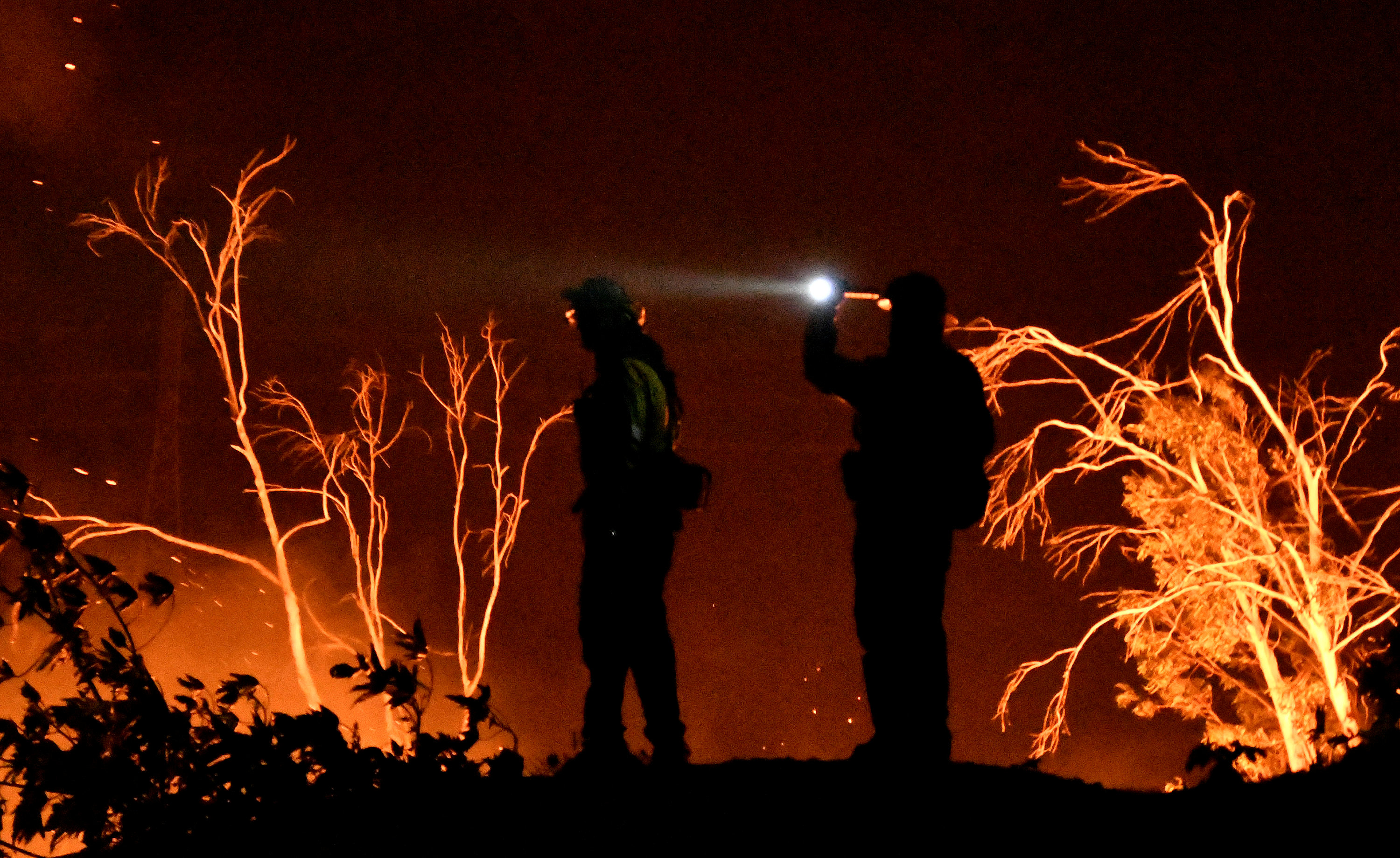
By Dan Whitcomb
LOS ANGELES (Reuters) – A firefighter was killed on Thursday while battling a mammoth California wildfire as crews sought to protect coastal cities and towns in the path of flames that have destroyed more than 700 homes.
The flag-draped remains of firefighter Cory Iverson, 32, were driven out of the fire zone in Ventura County, northwest of Los Angeles, in a hearse as his comrades saluted from roadsides and overpasses.
“Anne and I are saddened by Engineer Cory Iverson’s tragic death. His bravery and years of committed service to the people of California will never be forgotten,” California Governor Jerry Brown said in a statement.
Fire officials released little information about the circumstances surrounding Iverson’s death, which came while he was fighting the so-called Thomas Fire, now the fourth-largest wildfire on record in California since 1932.
The Los Angeles Daily News reported that Iverson, a California Department of Forestry and Fire Protection engineer, perished in an accident near the community of Fillmore, where a mayday alert was sounded.
The Thomas Fire, which erupted on Dec. 4 near a small private college in Ojai, has since blackened more than 249,000 acres.
The conflagration advanced again overnight to surpass the Zaca Fire, which struck Santa Barbara County in 2007, charring 240,000 acres (97,120 hectares).
The Thomas Fire, which was 35 percent contained as of Thursday evening, has burned 729 single-family homes to the ground and damaged another 175. The blaze has displaced more than 94,000 people.
The wildfire remained a threat to some 18,000 homes and other structures in the communities of Santa Barbara, Carpinteria, Summerland and Montecito along California’s scenic coastline, especially if hot, dry Santa Ana winds return.
Red-flag warnings, issued for extreme fire weather conditions in the area, were extended through Friday morning.
“Right now, there really is a fear in the community. We’re very used to fire, but the magnitude of this one is something that we haven’t seen,” Monique Limon, a state assembly member whose districts includes parts of Ventura and Santa Barbara counties, told Reuters
Many public schools in the Santa Barbara area canceled classes this week and will not reopen until the annual winter break ends in January.
Some of the other fires burning over the past week in San Diego and Los Angeles counties have largely been brought under control.
Investigators determined that the Skirball Fire, which destroyed six homes in Los Angeles’ wealthy Bel-Air neighborhood and scorched a building at a winery owned by media mogul Rupert Murdoch, was started by a cooking fire at a homeless encampment, the Los Angeles Fire Department said earlier this week.
The Lilac Fire, which burned more than 4,000 acres (1,620 hectares) in northern San Diego County and destroyed 157 structures, was 97 percent contained as of Thursday, Cal Fire said.
(Additional reporting by Brendan O’Brien in Milwaukee, Bernie Woodall in Fort Lauderdale, Florida, and Ben Klayman in Detroit; Editing by Cynthia Osterman and Leslie Adler)











